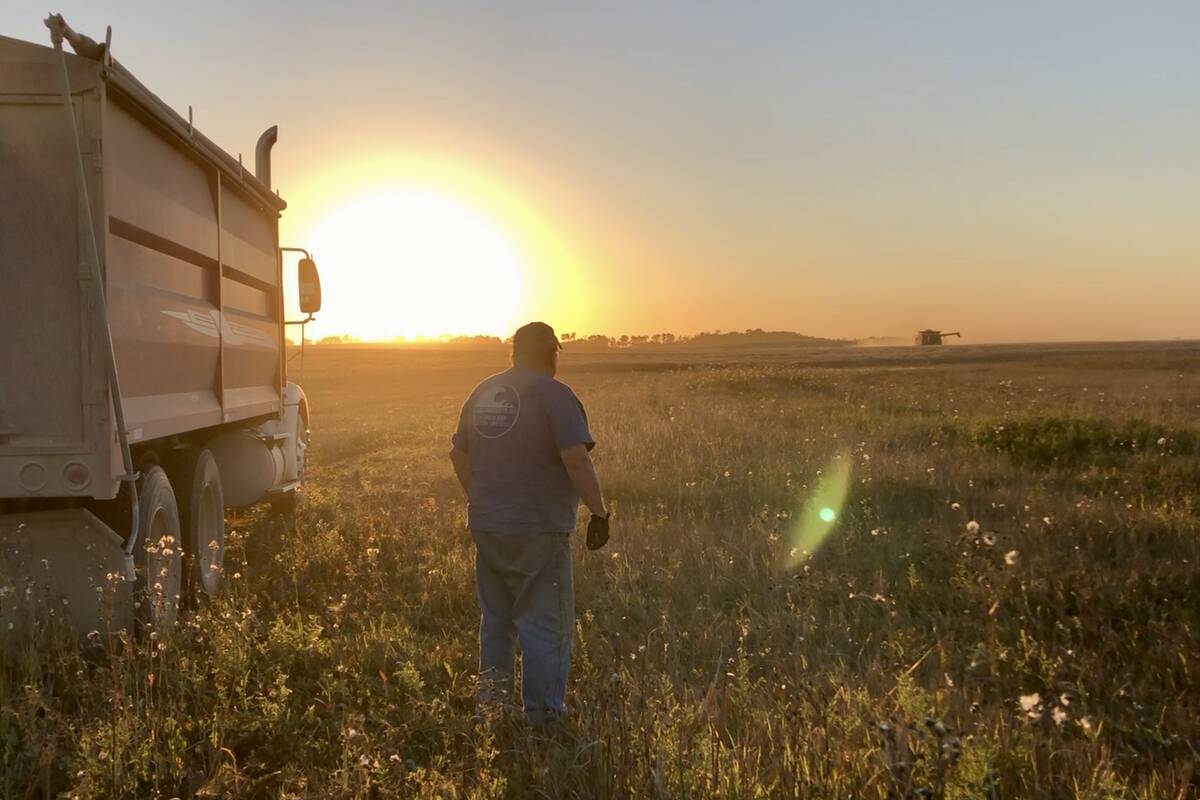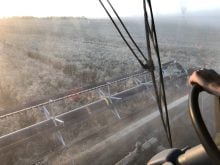Damage imposed on the Canadian livestock sector by U.S. country-of-origin labelling has abated in recent months, but an analyst says the worst is not over.
U.S. industry adjustments to COOL and a shrinking American livestock herd increased demand for Canadian animals and decreased the COOL discount on prices in 2010, Kevin Grier from the George Morris Centre in Guelph, Ont., wrote in an analysis.
However, as the American herd expands, “U. S. buyers will once again be able to discriminate more aggressively against Canadian livestock,” said Grier.
Read Also

VIDEO: Bittersweet harvest for this family farmhand
Bruce Burnett helps his brother harvest wheat and canola for the last time on the family farm in Manitoba where they both grew up.
“This will once again provide an opportunity for discounting or ignoring Canadian supplies.”
It’s also possible that COOL policy could spread overseas, which Grier said makes the Canadian and Mexican challenge at the World Trade Organization all the more important.
“The issue has taken on greater importance because other nations are seeing how successful COOL has become as a non-tariff barrier,” he wrote.
“Korea has adopted a form of COOL, as has the European Union, of course. If COOL is not defeated, it could become a barrier to trade that impacts many nations.”
A George Morris Centre analysis of COOL’s impact in 2009, the first year of implementation, concluded that prices for Canadian market hogs shipped south fell more than $10.
Fed cattle prices were off as much as $4 per hundredweight.
Export volumes also dropped drastically during the first half of 2009: slaughter hog exports fell 60 percent and fed cattle exports to the U.S. were down 20 percent.
Grier said COOL was the obvious cause.
American officials have defended it before the WTO dispute panel as consumer education rather than a trade barrier, he said, but the reality obviously is different.
“The bottom line for COOL is that it has served no commercial interests and provided no benefits to consumers or industry in either Canada or the U.S.,” he wrote.
“It was always designed as a non-tariff barrier to trade and it has achieved that goal beyond anyone’s wildest expectations.”
The WTO dispute panel ruling is expected by July, although it almost certainly will be appealed.
The appeal process could drag out the affair for another year.
















